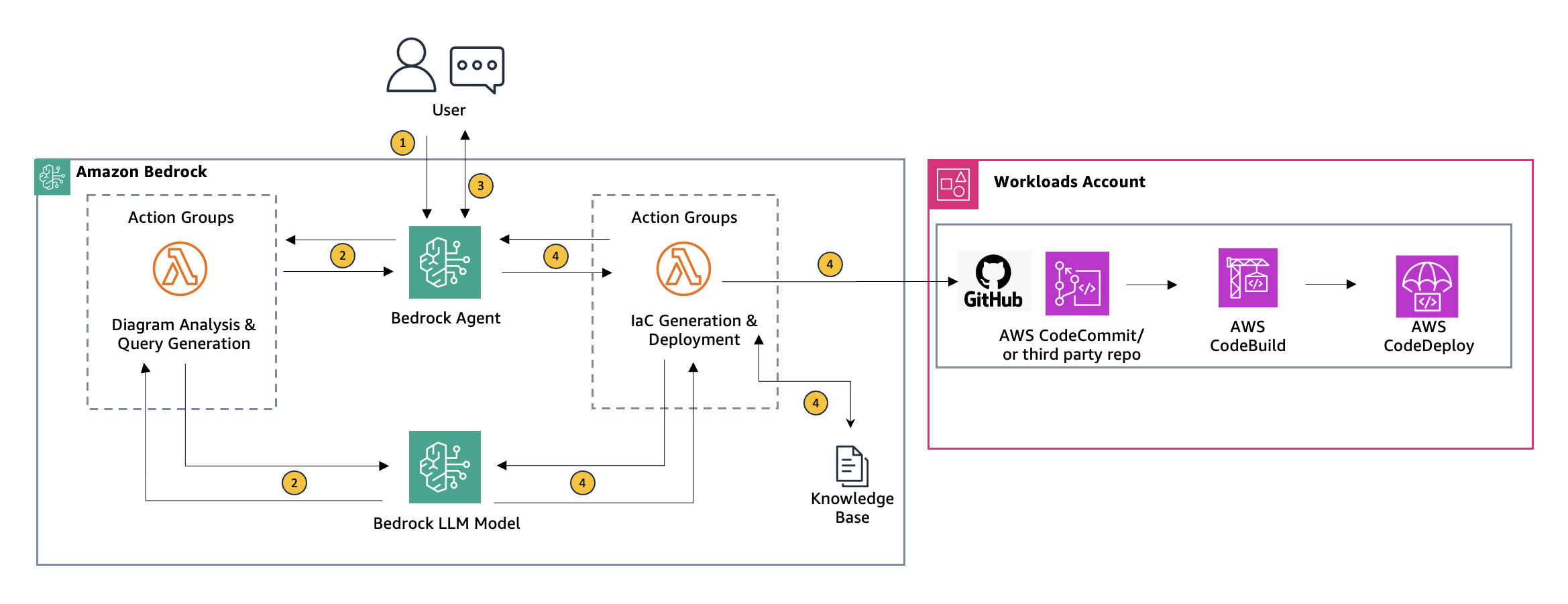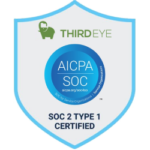Amazon Bedrock: The Next Frontier in Generative AI for Businesses
In today’s rapidly evolving tech landscape, businesses are racing to leverage artificial intelligence not just as a tool, but as a strategic partner. Imagine a world where companies can access powerful AI models without managing the underlying infrastructure—where innovation is limited only by imagination, not technical constraints. This is exactly what Amazon Bedrock promises: a revolutionary platform that democratizes access to foundation models and enables organizations of all sizes to build sophisticated AI-powered applications with unprecedented ease.
Amazon Bedrock isn’t just another cloud service—it’s a paradigm shift. With the rise of generative AI, companies face a daunting challenge: powerful AI models exist, but integrating them into workflows is complex, expensive, and time-consuming. Bedrock solves this by providing a fully managed service that connects businesses to leading foundation models without the need to provision servers, manage scaling, or handle operational overhead. In essence, it lets businesses focus on creativity and innovation, while Amazon takes care of the technical heavy lifting.

What Is Amazon Bedrock?
Amazon Bedrock is a fully managed service from AWS that allows developers to build and scale applications using foundation models (FMs) from multiple AI providers directly via API. Instead of training large AI models from scratch—which requires huge datasets, specialized hardware, and significant expertise—Bedrock gives organizations on-demand access to pre-trained models that can be customized for specific use cases.
Think of Bedrock as a bridge between businesses and some of the most advanced AI technologies in existence. Companies can tap into models from AI leaders like AI21 Labs, Anthropic, Cohere, and Stability AI, all from a single unified platform. The service eliminates the barriers of computational complexity, cost, and infrastructure, which historically limited AI adoption to only tech giants.
In simpler terms: if you’ve ever wanted to integrate natural language understanding, text generation, summarization, or content creation into your business applications, Bedrock makes it faster, easier, and more scalable.
Why Amazon Bedrock Matters
The significance of Amazon Bedrock goes beyond convenience. In an era dominated by AI-driven innovation, speed to market and operational efficiency are decisive competitive advantages. Let’s break down why Bedrock is a game-changer:
- Lower Entry Barrier: Previously, developing AI-driven applications required immense investment in hardware, cloud resources, and AI expertise. Bedrock reduces this barrier by providing ready-to-use models accessible via API.
- Rapid Experimentation: Businesses can experiment with multiple foundation models without long procurement or setup cycles. This enables faster prototyping and iteration on AI-driven solutions.
- Scalable AI at Enterprise Level: Bedrock handles scaling automatically. Companies can deploy AI-powered applications to thousands—or even millions—of users without worrying about underlying infrastructure constraints.
- Secure and Compliant: Security and data privacy are crucial. Bedrock ensures that data sent to foundation models is encrypted and secure, aligning with enterprise-grade compliance requirements.
- Integration Across Industries: From finance to healthcare, customer service to content creation, Bedrock makes advanced AI capabilities accessible across sectors.
In short, Bedrock is more than a tool—it’s an enabler of next-generation AI applications, helping organizations move from experimentation to production-ready AI solutions with minimal friction.

Amazon Bedrock Agent Usage Diagram
How Amazon Bedrock Works
To understand Bedrock’s magic, imagine it as a cloud-based gateway to multiple AI experts. Here’s a simplified explanation of how it works:
- Choose Your Foundation Model: Bedrock provides access to models from several providers, each with unique capabilities—some specialize in text generation, others in reasoning, summarization, or even code creation.
- Customize Without Training from Scratch: Through “lightweight tuning” (also called “instruction tuning”), organizations can adapt foundation models to their specific domain or style without investing in full-scale training.
- API-First Interaction: Developers interact with Bedrock through simple API calls. No infrastructure management, no GPU clusters—just straightforward integration.
- Automated Scaling & Management: Bedrock automatically handles scaling, load balancing, and server maintenance, letting developers focus on building applications rather than managing servers.
- Secure & Compliant Data Flow: Enterprise-grade encryption and strict compliance ensure that sensitive data remains protected, even when interacting with third-party models.
This workflow effectively transforms AI adoption from a complex, multi-month project into a plug-and-play experience, making cutting-edge AI accessible to a much wider audience.
Key Features of Amazon Bedrock
Amazon Bedrock’s appeal lies in its carefully designed features that address common pain points in AI adoption:
- Multiple Foundation Models: Access to models from Anthropic, AI21 Labs, Cohere, Stability AI, and others. This diversity allows businesses to select models that align with specific use cases.
- No Infrastructure Management: Bedrock removes the need to manage servers, GPUs, or cluster scaling. Developers simply call APIs.
- Customizable AI: Businesses can adapt models with prompts or instruction tuning, ensuring outputs align with brand voice, domain knowledge, or operational requirements.
- Enterprise Security: End-to-end encryption and compliance with industry standards ensure that sensitive business data remains protected.
- Seamless Integration with AWS: Bedrock works smoothly with other AWS services, such as Amazon S3 for data storage or Amazon Lambda for serverless computing, creating a unified development environment.
- Pay-as-You-Go Pricing: Organizations only pay for what they use, eliminating upfront infrastructure costs.
These features combine to create a powerful, flexible, and secure AI platform that is accessible even to companies without extensive AI expertise.
Real-World Use Cases
The beauty of Bedrock is its versatility. Businesses across industries are already finding innovative ways to leverage it:
- Customer Support Automation: Companies can build chatbots that understand context, generate human-like responses, and provide 24/7 support. For example, a telecom company could deploy a Bedrock-powered assistant that handles complex queries, reducing wait times and support costs.
- Content Generation: Marketing agencies and media companies can automate copywriting, social media content, or report summaries while maintaining a unique brand voice.
- Document Summarization & Knowledge Extraction: Law firms, financial institutions, and research organizations can use Bedrock to summarize lengthy documents, extract key insights, or analyze trends quickly.
- Personalized Recommendations: Retailers can build AI systems that analyze user behavior and generate personalized product recommendations in real time.
- Healthcare Applications: Bedrock can support natural language processing for patient records, automate medical coding, or generate patient education content while maintaining strict privacy controls.
These use cases demonstrate that Bedrock is not just a “cool tech tool”—it’s a business enabler that directly impacts efficiency, customer experience, and innovation.
Comparison with Other AI Platforms
While other cloud providers offer AI services, Bedrock’s differentiators stand out:
| Feature | Amazon Bedrock | Azure OpenAI | Google Vertex AI |
| Foundation Model Variety | Multiple providers (Anthropic, Cohere, AI21) | OpenAI models only | Google’s proprietary models |
| Infrastructure Management | Fully managed, no setup required | Some setup needed | Managed, but more DevOps involved |
| Customization | Instruction tuning via API | Fine-tuning required | Fine-tuning + ML pipelines |
| AWS Integration | Deeply integrated | Limited | Limited |
| Enterprise Security | End-to-end encryption | Enterprise-grade | Enterprise-grade |
The combination of multi-model access, easy customization, and deep AWS integration makes Bedrock uniquely positioned for enterprises that want agility and scale without heavy operational overhead.
Advantages of Amazon Bedrock
- Speed to Market: Launch AI applications faster because infrastructure is handled for you.
- Cost-Efficient: Pay only for what you use; no large upfront hardware investments.
- Flexibility: Choose the best model for your task without locking into a single vendor.
- Enterprise-Ready: Security, compliance, and AWS reliability make it suitable for critical business applications.
- Scalability: Automatically scales to meet demand without manual intervention.
Challenges and Limitations
No technology is perfect. Bedrock also has considerations:
- Model Dependency: While models are powerful, reliance on pre-trained models may limit control over edge-case outputs.
- Cost at Scale: For extremely high-volume workloads, costs can grow significantly—though still generally lower than managing your own infrastructure.
- Learning Curve: Developers still need to design effective prompts and understand model behavior to achieve optimal results.
- Limited Model Selection Over Time: Currently, the list of foundation models is curated; companies with niche requirements may need additional customization.
Acknowledging these limitations ensures businesses plan deployments thoughtfully rather than treating Bedrock as a “magic button.”
Security, Compliance & Trust
Amazon emphasizes enterprise-grade security:
- Data Encryption: All data sent to Bedrock is encrypted in transit and at rest.
- Access Control: Fine-grained IAM policies allow organizations to control who can use Bedrock and how.
- Compliance: Aligns with HIPAA, SOC, ISO, and other regulatory frameworks, making it suitable for sensitive industries like healthcare and finance.
Trust and compliance are critical for widespread enterprise adoption, and Bedrock addresses these concerns effectively.
Pricing & Accessibility
Bedrock uses a pay-as-you-go model. Businesses pay for the compute used by the models they invoke, avoiding large upfront costs associated with traditional AI infrastructure. This pricing model makes it accessible for startups, mid-size companies, and large enterprises alike.
Additionally, the AWS Free Tier allows limited experimentation without financial risk, helping companies test and prototype AI-driven solutions before scaling.
Expert Insight & Industry Perspective
Industry experts see Amazon Bedrock as a key enabler for the AI-driven economy. Dr. Lena Carter, a leading AI strategist, notes:
“Bedrock lowers the barrier to enterprise AI adoption. By removing infrastructure complexity, it allows businesses to focus on innovation and business logic rather than managing GPUs and clusters.”
Analysts predict that platforms like Bedrock will accelerate the shift toward AI-first businesses, where generative AI becomes an integral part of products, services, and workflows rather than an experimental add-on.
Who Should Use Amazon Bedrock?
- Startups: Can leverage pre-trained models to build competitive AI products quickly.
- Enterprises: Can scale AI across departments without massive infrastructure investments.
- Developers & Data Scientists: Can prototype and deploy AI applications faster using familiar APIs.
- Industries with Sensitive Data: Finance, healthcare, and legal sectors benefit from security and compliance features.
- Content & Marketing Teams: Can automate and enhance creative workflows while maintaining brand voice.
Essentially, any organization looking to integrate AI efficiently and securely should consider Bedrock.
Step-by-Step: How Businesses Can Leverage Bedrock
- Define Use Case: Identify business problems that can benefit from generative AI.
- Select Foundation Model: Choose the model best suited for the task (text, summarization, reasoning, etc.).
- Customize Prompts/Instructions: Adapt outputs to the business context.
- Integrate via API: Connect Bedrock with internal applications or customer-facing platforms.
- Test & Refine: Iterate prompts and workflows to ensure outputs meet expectations.
- Scale Production: Deploy to a large audience, confident that Bedrock handles infrastructure and scaling.
- Monitor & Optimize: Track performance and costs, fine-tuning prompts and usage as needed.
This approach ensures measurable value and minimal operational burden.
The Future of Amazon Bedrock & Generative AI
The generative AI ecosystem is evolving rapidly, and Bedrock positions AWS as a central player. Future developments are likely to include:
- Access to more foundation models from emerging AI leaders
- Enhanced instruction tuning for domain-specific applications
- Better integration with analytics and workflow automation tools
- More cost-optimized pricing for large-scale adoption
Ultimately, platforms like Bedrock are shaping a world where AI is ubiquitous, accessible, and embedded across every industry—from customer support to creative content, to enterprise automation.
Frequently Asked Questions About Amazon Bedrock
- What is Amazon Bedrock?
Answer:
Amazon Bedrock is a fully managed AWS service that allows businesses to build and scale AI applications using foundation models from multiple providers—without managing infrastructure. It provides pre-trained models that can be customized for specific tasks through simple API calls.
- How is Amazon Bedrock different from AWS’s other AI services?
Answer:
While AWS offers AI and ML services like SageMaker, Bedrock focuses on foundation models and generative AI, allowing businesses to access pre-trained models from multiple vendors. Unlike SageMaker, you don’t need to manage servers, clusters, or GPUs—Bedrock handles the infrastructure for you.
- Can I customize models in Amazon Bedrock?
Answer:
Yes! Bedrock supports lightweight tuning or instruction-based customization. This allows businesses to adapt model outputs to specific industries, brand voices, or workflows without fully retraining the models.
- Which foundation models are available in Bedrock?
Answer:
Bedrock provides models from leading AI providers, including Anthropic, AI21 Labs, Cohere, and Stability AI. Each model specializes in tasks such as text generation, summarization, reasoning, or creative content creation.
- Do I need AI expertise to use Bedrock?
Answer:
You don’t need deep AI expertise, but some understanding of prompts and model behavior helps optimize results. The platform is designed to be accessible for developers, businesses, and teams with minimal AI background.
- How does Bedrock handle data privacy and security?
Answer:
All data sent to Bedrock is encrypted in transit and at rest. The platform supports enterprise-grade security and compliance standards (HIPAA, SOC, ISO), ensuring sensitive information is protected.
- Is Amazon Bedrock cost-effective for startups?
Answer:
Yes. Bedrock uses a pay-as-you-go pricing model, so businesses only pay for the compute resources they use. There’s no need for large upfront infrastructure investments, making it accessible to startups and small businesses.
- Can Bedrock scale for large enterprises?
Answer:
Absolutely. Bedrock automatically handles scaling and load balancing, allowing AI-powered applications to serve thousands—or even millions—of users without manual intervention.
- What industries can benefit from Bedrock?
Answer:
Almost any industry can leverage Bedrock. Common use cases include:
- Customer support (chatbots, virtual assistants)
- Marketing & content generation
- Finance & legal (document summarization, knowledge extraction)
- Healthcare (patient education, medical coding)
- Retail (personalized recommendations)
- How do I get started with Amazon Bedrock?
Answer:
- Sign in to AWS and navigate to Bedrock.
- Choose a foundation model that fits your use case.
- Customize the model using instructions or prompts.
- Integrate via API into your application or workflow.
- Test, refine, and scale based on usage and feedback.
Conclusion
Amazon Bedrock is more than just an AI service—it’s a revolution in how businesses access, deploy, and scale artificial intelligence. By offering managed access to multiple foundation models, deep customization, enterprise-grade security, and seamless AWS integration, Bedrock empowers organizations to focus on innovation rather than infrastructure.
For startups, enterprises, developers, and creative teams, Bedrock represents a unique opportunity to harness the power of AI without the traditional barriers. The platform is enabling a future where AI-driven applications are faster to build, more reliable, and more secure—opening doors to possibilities that were once considered out of reach.
Whether your business aims to automate customer support, generate content, summarize complex documents, or explore new AI-powered experiences, Amazon Bedrock provides the tools, security, and scalability to make it a reality.
The era of accessible, enterprise-ready generative AI has arrived—and with Amazon Bedrock, the possibilities are virtually limitless




